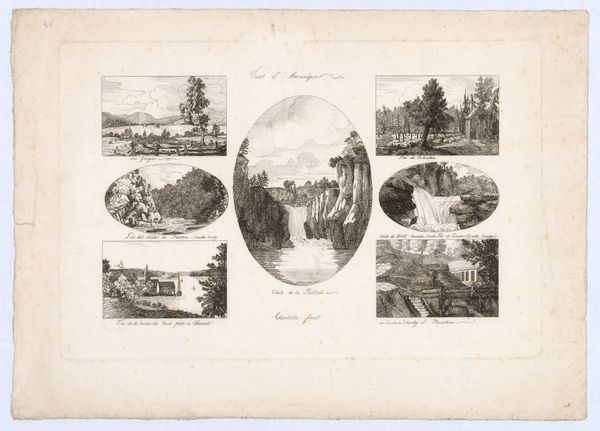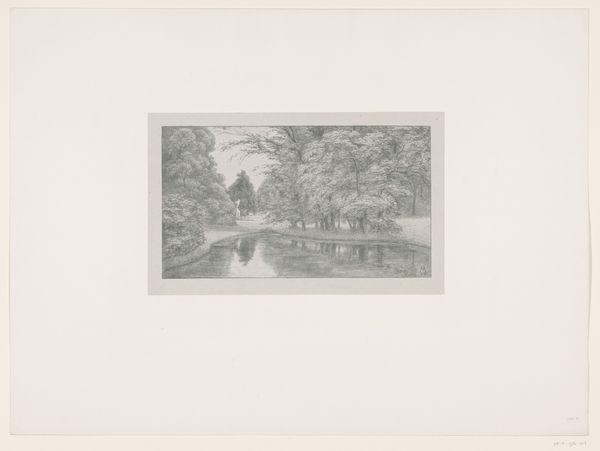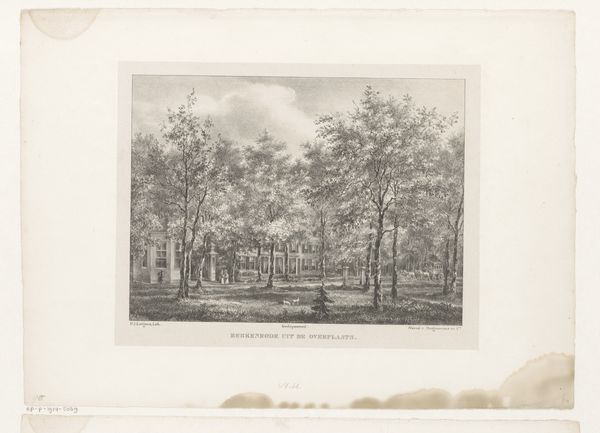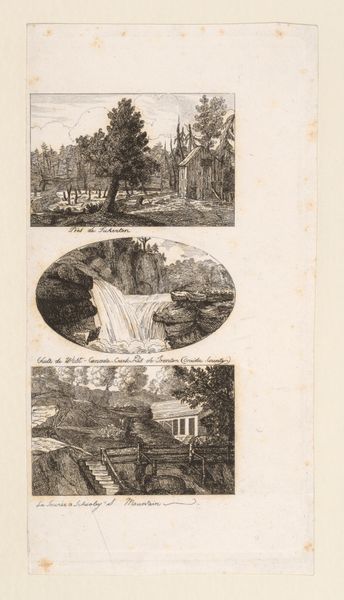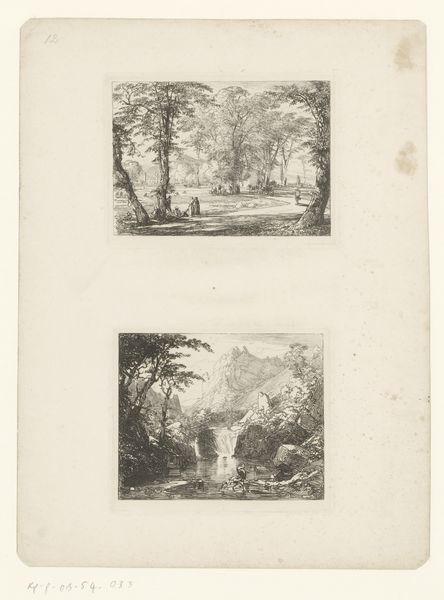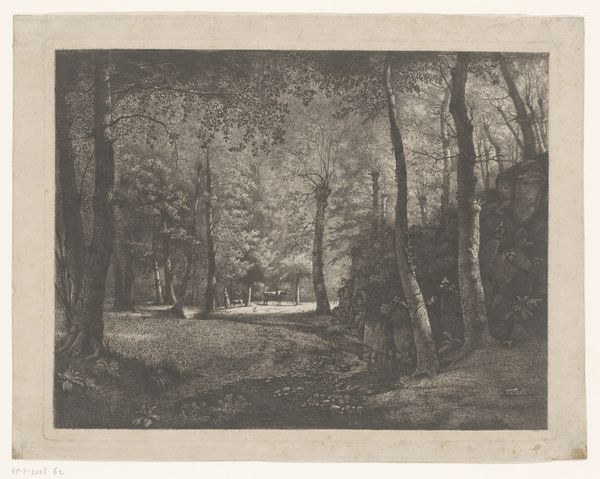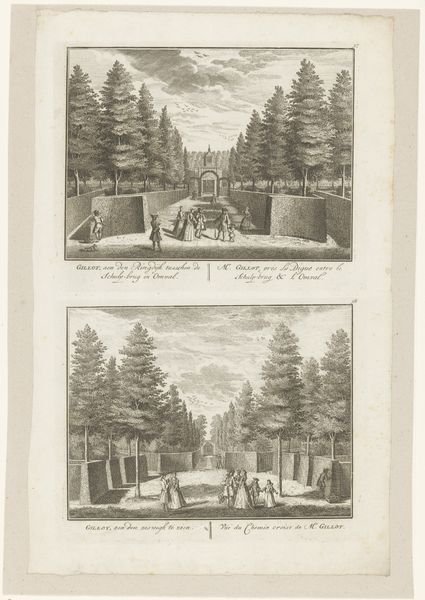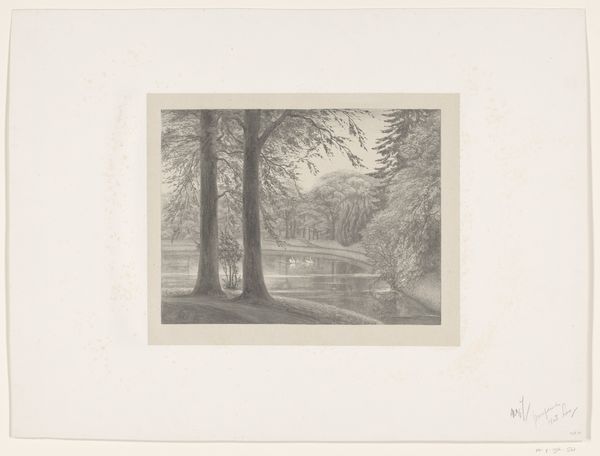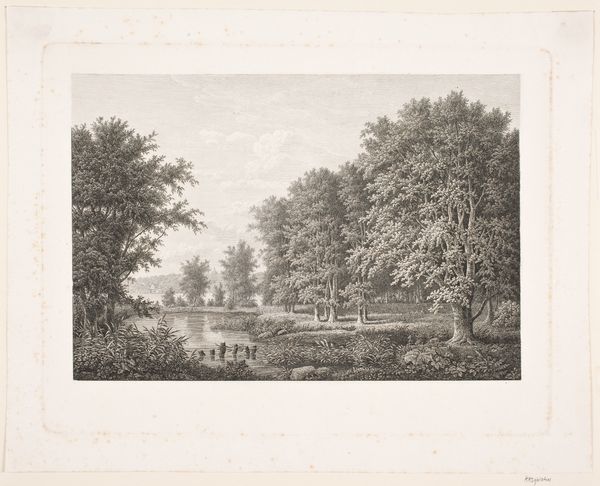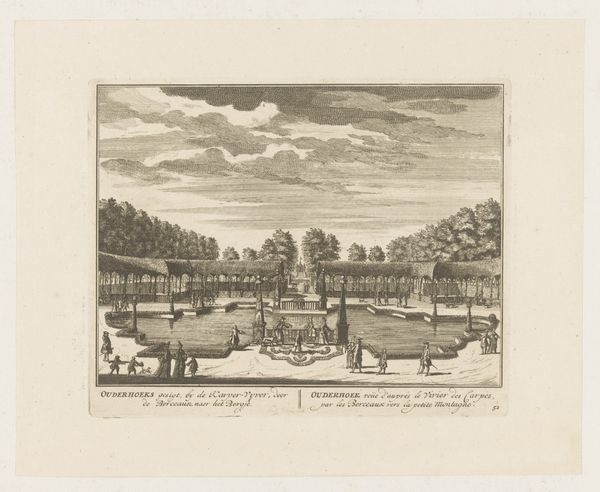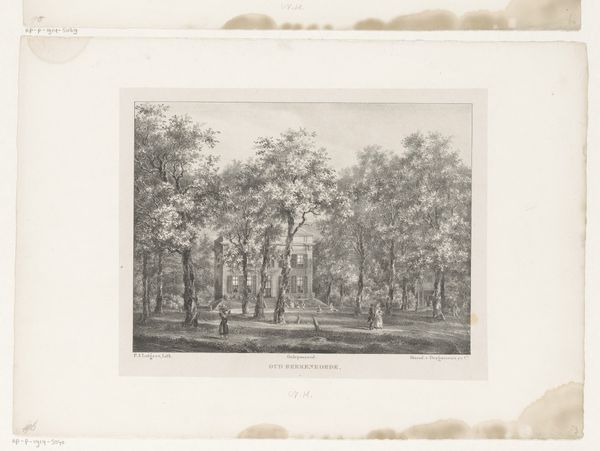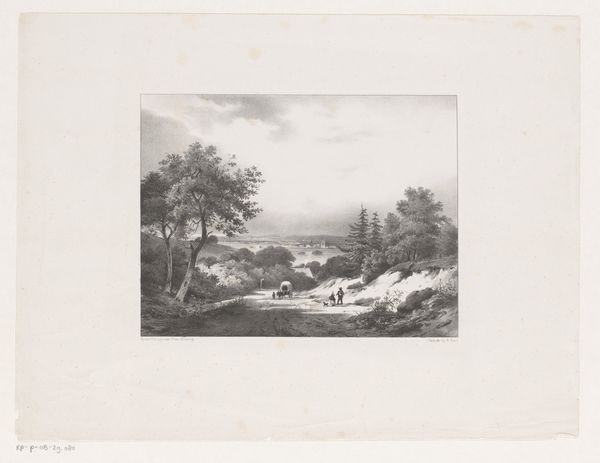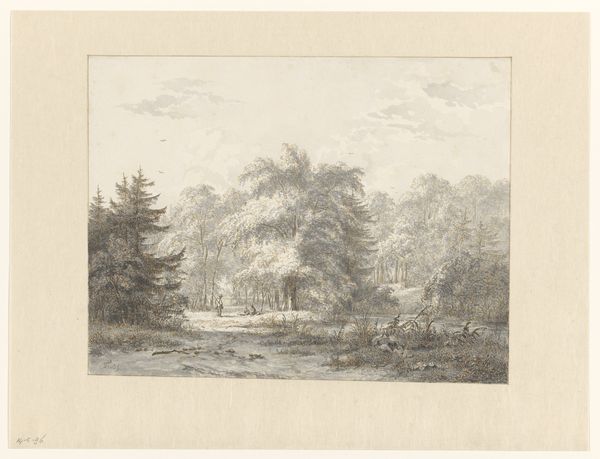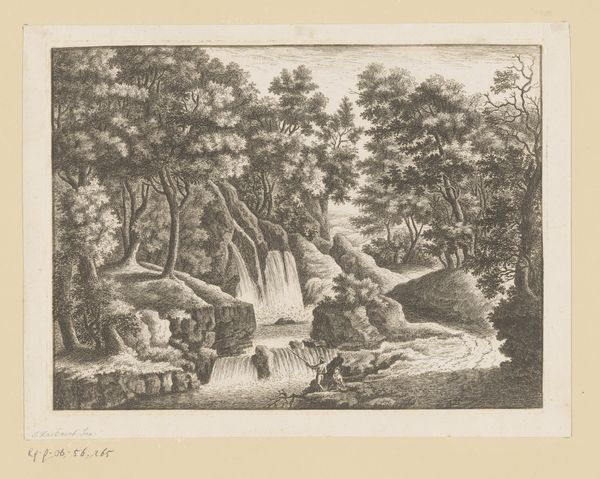
Dimensions: height 551 mm, width 665 mm
Copyright: Rijks Museum: Open Domain
Johann Wilhelm Friedrich Kachel created this print of the Oud Eik en Duinen cemetery in the mid-19th century, using a technique called lithography. Lithography involves drawing on a flat stone or metal plate with a greasy crayon, then applying ink which adheres only to the drawn areas. This printmaking method allowed for relatively quick and inexpensive reproduction, making images accessible to a wider audience. The tonal range achieved in this print, from the velvety blacks of the trees to the soft greys of the sky, speaks to Kachel's mastery of the lithographic process. The very nature of lithography is tied to the rise of industrial capitalism, with its emphasis on mass production and distribution. Kachel’s choice of this medium reflects a shift towards a more democratic art world, where images could be disseminated beyond the elite circles of patrons and collectors. The cemetery itself, with its ordered rows of graves and imposing monuments, can be seen as a reflection of the social hierarchies and values of the time. By considering the materials and techniques used, we can gain a deeper understanding of the artwork's cultural and historical significance.
Comments
No comments
Be the first to comment and join the conversation on the ultimate creative platform.
